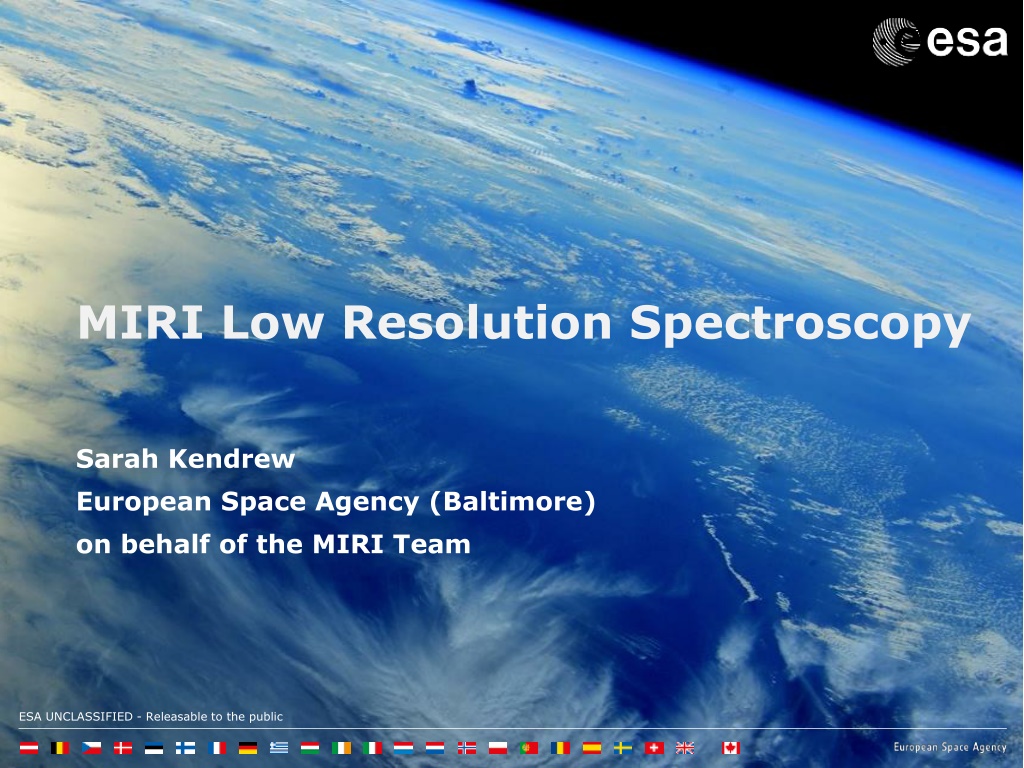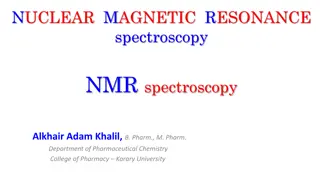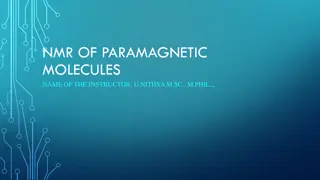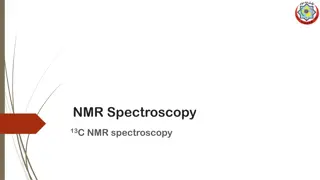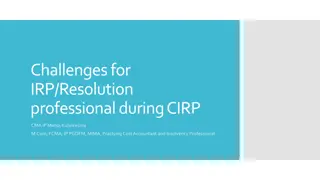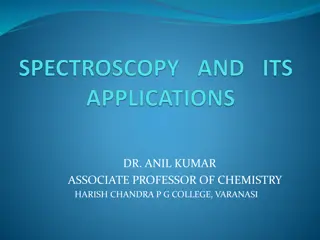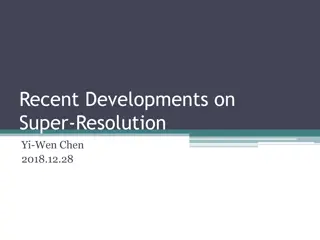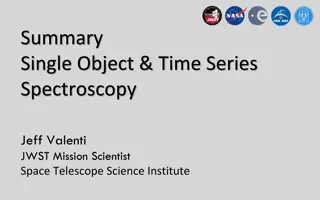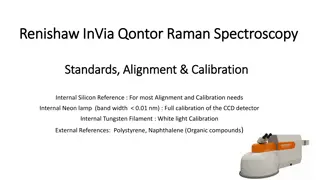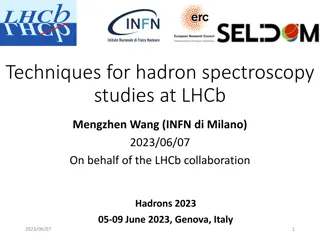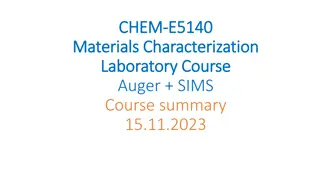MIRI Low Resolution Spectroscopy Overview
Explore the design, operating principles, and performance of MIRI Low-Resolution Spectroscopy presented by Sarah Kendrew from the European Space Agency. Learn about the basics, design, focal plane layout, testing, and capabilities of the instrument through detailed images and descriptions.
Download Presentation

Please find below an Image/Link to download the presentation.
The content on the website is provided AS IS for your information and personal use only. It may not be sold, licensed, or shared on other websites without obtaining consent from the author. Download presentation by click this link. If you encounter any issues during the download, it is possible that the publisher has removed the file from their server.
E N D
Presentation Transcript
MIRI Low Resolution Spectroscopy Sarah Kendrew European Space Agency (Baltimore) on behalf of the MIRI Team ESA UNCLASSIFIED - Releasable to the public
Low-resolution Spectroscopy Overview Design and operating principles Focal plane locations LRS testing & data Preparing an LRS observation: slit vs. slitless Performance Strengths & weaknesses Further reading: Kendrew et al, PASP 2015 and SPIE 2016: MIRI LRS Bouchet at al, PASP 2015: MIRI Imager Glasse et al, PASP 2015: MIRI Sensitivity Gordon et al, PASP 2015: MIRI Operations ESA UNCLASSIFIED Releasable to the public Sarah Kendrew, ESAC JWST Workshop, 26-28 September 2016
LRS Basics & Design R ~ 100 spectroscopy of compact sources from 5- (10) 12 m (~40 to 160 over the 5-10 m range) Can be operated in slitted (4.7 x 0.52 ) or slitless mode Shares focal plane with the imager & coronagraph modes Imager focal plane Dispersion via double prism in filter wheel m px ESA UNCLASSIFIED Releasable to the public Sarah Kendrew, ESAC JWST Workshop, 26-28 September 2016
Focal plane layout Slitless spectroscopy: Fixed pointing position Subarray readout Min. frame time 0.16s Slitted spectroscopy: Fixed slit location Full array readout Imager field not blocked 5-12 m spectrum dispersed over ~370 px Dedicated target acquisition region ESA UNCLASSIFIED Releasable to the public Sarah Kendrew, ESAC JWST Workshop, 26-28 September 2016
An LRS Spectrum ESA UNCLASSIFIED Releasable to the public Sarah Kendrew, ESAC JWST Workshop, 26-28 September 2016
LRS Testing Numerous test campaigns MIRI Imager testing @ CEA Saclay, 2009-2010 MIRI flight test campaign @ RAL, 2011 CV campaigns @ Goddard, 2013-2016 JPL detector testing (persistence, subarrays etc Further analysis & modeling Sensitivity, PCE, detector yield (see Glasse, Dicken) PSF modeling (artefact) ESA UNCLASSIFIED Releasable to the public Sarah Kendrew, ESAC JWST Workshop, 26-28 September 2016
Preparing an LRS observation: SLIT Source: point or extended Imager focal plane Target acquisition: Choice of 4 filters Dedicated TA region Not compulsory Dithering 2 along-slit nods Off-slit background Read mode FAST/SLOW ESA UNCLASSIFIED Releasable to the public Sarah Kendrew, ESAC JWST Workshop, 26-28 September 2016
Preparing an LRS observation: SLITLESS Choice of slitless mode triggers Time Series Observation operational mode Dedicated subarray & pipeline branch Target acquisition (TBD): Choice of 4 filters (NDF likely) Centroiding in slitless subarray NO Dithering Max exposure time of 3 hours WAIVED Min. frame time in FAST: 0.17s ESA UNCLASSIFIED Releasable to the public Sarah Kendrew, ESAC JWST Workshop, 26-28 September 2016
Astronomers Proposal Tool: LRS template FULL SLITLESS (SUBPRISM) Point source Extended target SLOW FAST NGROUPS currently 4 (TBD) ESA UNCLASSIFIED Releasable to the public Sarah Kendrew, ESAC JWST Workshop, 26-28 September 2016
Performance: Line sensitivity (SLIT) Glasse et al, PASP 2015 (erratum) SLITLESS sensitivity: Factor ~10 worse NB: does not yet include revised detector quantum yield ESA UNCLASSIFIED Releasable to the public Sarah Kendrew, ESAC JWST Workshop, 26-28 September 2016
Performance: Continuum sensitivity (SLIT) Glasse et al, PASP 2015 (erratum) SLITLESS sensitivity: Factor ~10 worse NB: does not yet include revised detector quantum yield ESA UNCLASSIFIED Releasable to the public Sarah Kendrew, ESAC JWST Workshop, 26-28 September 2016
Bright limits (SLIT) Glasse et al, PASP 2015 SLITLESS MODE: Factor 17 higher Min value: 63 mJy @ 5.5 m (K~8) Assumes 2-frame reads, < 60% full well Full array FAST mode (frame time ~3s) NB: does not yet include revised detector quantum yield ESA UNCLASSIFIED Releasable to the public Sarah Kendrew, ESAC JWST Workshop, 26-28 September 2016
Limitations/Open Questions Slitless/Time Series Observations: Effect of the turnover in dispersion? Bright limits Achievable stability & precision for very short ramps m px Calibration data products based on ground test data Focused on nominal range of 5-10 m PSF model not yet optimal Wavelength calibration for < 5 m and > 10 m has larger uncertainties ESA UNCLASSIFIED Releasable to the public Sarah Kendrew, ESAC JWST Workshop, 26-28 September 2016
LRS strengths & weaknesses STRENGTHS Built by the same heroes as the MIRI Imager Meets & exceeds requirements e.g. wavelength coverage Excellent complement to MRS and NIR spectroscopic modes: low-resolution, instantaneous broad wavelength coverage Slitless mode offers the ability to perform high-quality time series observations, e.g. suitable for MANY exoplanet host stars WEAKNESSES (/CAVEATS) Spectral foldover below 4.5 m unmitigated for slitless mode Calibration not yet optimal, especially outside the nominal range ESA UNCLASSIFIED Releasable to the public Sarah Kendrew, ESAC JWST Workshop, 26-28 September 2016
